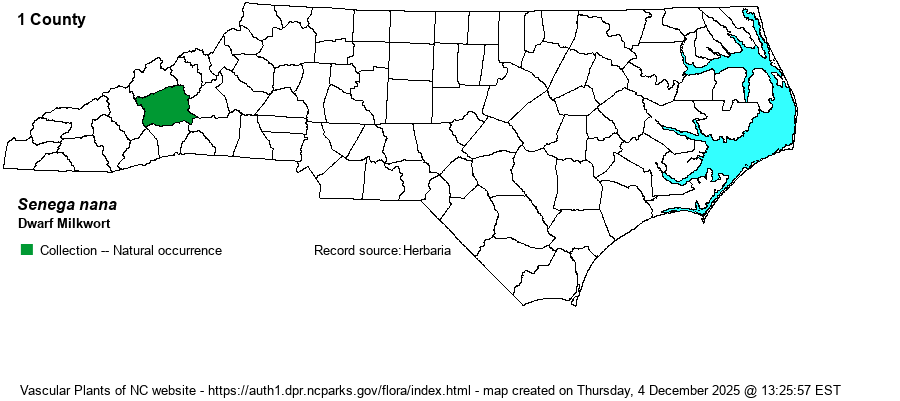| Author | (Michx.) J.F.B. Pastore & J.R. Abbott | |
| Distribution | Known only from an historical collection (1891) from the Mountains in Buncombe County, very odd for a mainly Coastal Plain species. A SERNEC specimen for Forsyth County, in the Piedmont, is apparently incorrectly identified or is/was planted.
This is a Southern species, ranging from western NC (formerly) and a few sites in TN and southern AR, south to the Gulf Coast from FL to TX. | |
| Abundance | Long historical, assuming the original location was a natural site. The NCNHP has now ranked it as SX (Extirpated). It is on the Significantly Rare list, nonetheless. | |
| Habitat | There is no habitat information for the NC specimen. In its main range, it grows in damp sandy places such as in wet pine flatwoods or savannas, but it does occur in SC into stream seepages and pocosins. | |
| Phenology | Blooms from winter into June, and sporadically later. It fruits soon after flowering. | |
| Identification | This is an odd species, growing essentially without a flowering stem above ground. It exists as a basal rosette, of fleshy, glaucous (pale green), and oblanceolate to obovate leaves about 1 inch long. Several flower clusters essentially grow from the middle of the basal rosette, and each is "drumhead"-like, with dozens of light yellow flowers on the roughly 1 inch by 2/3-inch heads. | |
| Taxonomic Comments | All of the former Polygala species in NC have now been moved to the genus Senega in 2023. | |
| Other Common Name(s) | Candyroot | |
| State Rank | SX | |
| Global Rank | G5 | |
| State Status | SR-D | |
| US Status | | |
| USACE-agcp | | |
| USACE-emp | | |

